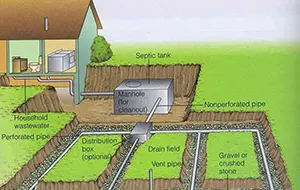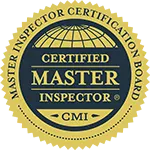Septic systems are easy to understand but hard to inspect so be on alert if buying a home with one installed.
It takes a specialized septic professional to get in there and check it out.
Instead of draining into a city treatment plant, a septic system drains into an underground tank near the home.
The tank collects the solid waste until it’s finally pumped out and hauled away. Bacteria in the tank break down the solid waste and keep it from contaminating the soil or well water. The liquid waste then leaves the tank and seeps into the ground or drains into a nearby lagoon.

But, in time, even a well-maintained septic system clogs up and breaks down. And before they’re replaced, lots of things can go wrong.
Common Problems
1. Damaged Pipes
Believe it or not, when it comes to damaged pipes you’re your own worst enemy. Many homeowners drive their vehicles over the septic bed. This happens when they don’t know where its location or there’s pavement over the septic bed. Flooding from surface runoff or rainwater can also do damage.
This stops the bacteria from doing its job and allows raw liquid waste to saturate the area or flow on the surface.
2. Additives
Additives that claim to help septic systems can generate too much biological activity. This keeps the solids from settling to the bottom of the tank so it ends up in the soil with the liquid.
3. Rusting tank covers
This is often overlooked, but a rusting tank cover can collapse or allow deadly gases to escape. Other parts of the tank can also rust and allow solids to contaminate the ground.
Inspecting a septic system is not quick or easy.
Sometimes the current owner has no idea of what type of system is in the ground or when it was last pumped. A search of maintenance records or city plans can help in these cases.
A quick scan of the area can uncover clues:
- Smell foul odors
- Strange growth or green stripes that line up with the leaching pipes
- Soggy sewage at the surface
Flushing a dye down the toilet can reveal problems if the dye appears on the surface. A big problem can take 20 minutes for the dye to show while a small problem may take up to five days.
Unfortunately, you can’t perform a dye test on all types of septic systems.











